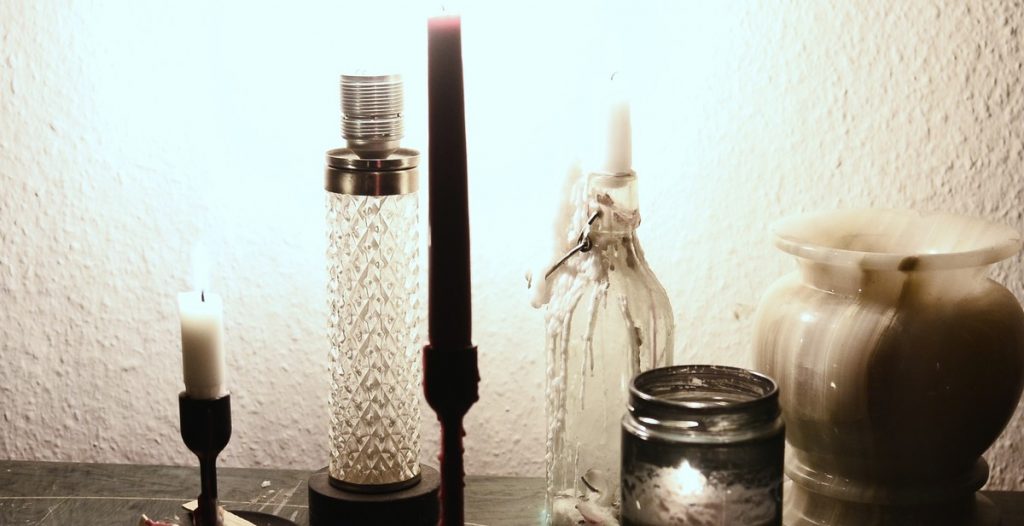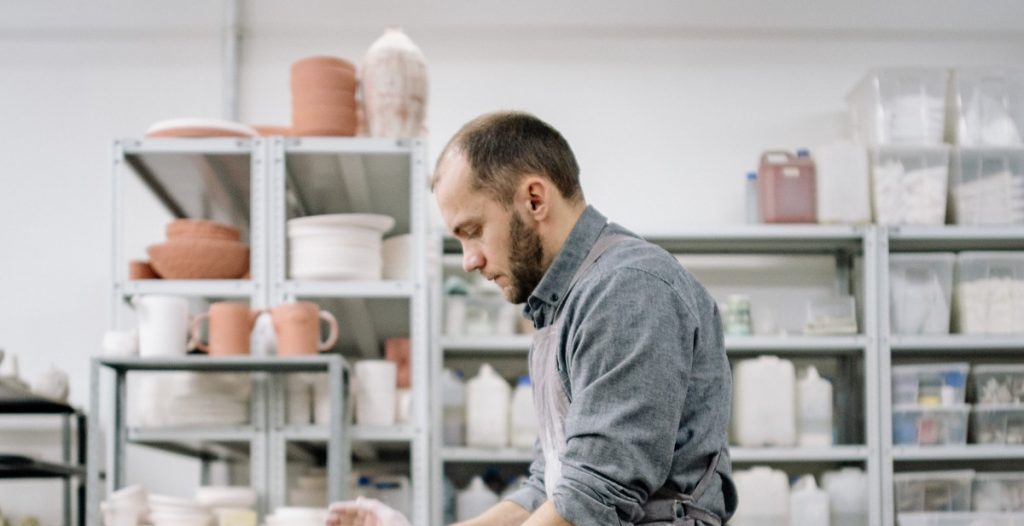The Use of Candles in the Home for Lighting, Cooking, and Heating Before the Advent of Electricity
Candles have been used for centuries as a source of light, heat, and even cooking in the home. Before the advent of electricity, candles were the primary source of light after dark, and they were used in virtually every home. Not only did candles provide light, but they also served as a way to heat the home and cook food.
During the Middle Ages, candles were made from tallow, which is the fat from cattle and sheep. Later, beeswax candles were introduced, which burned cleaner and had a pleasant scent. Candles were also made from bayberry wax, which was more expensive but burned longer and brighter than other waxes.
As technology advanced, candles became less important as a source of light and heat, but they are still used today for their decorative and aromatic qualities. In recent years, there has been a resurgence in the popularity of candles, with many people using them to create a cozy and comfortable atmosphere in their homes.
This article will explore the history of candles and their use in the home for lighting, cooking, and heating before the advent of electricity. We will also look at the different types of candles that were used and how they were made.

The History of Candles
Candles have been used for centuries as a source of light, heat, and even as a way to tell time. The history of candles dates back to ancient times, where they were made from various materials such as animal fat, beeswax, and plant waxes.
The Early Days of Candles
The earliest known use of candles dates back to ancient Egyptian times, where they were made from reeds soaked in animal fat. The ancient Romans also used candles made from tallow, a byproduct of animal fat, as a source of light. In China, candles were made from whale fat and produced a bright flame that could be seen from a distance.
The Advent of Beeswax Candles
The introduction of beeswax candles in the Middle Ages marked a significant improvement in candle technology. Beeswax candles produced a brighter, longer-lasting flame and had a pleasant honey-like scent. However, beeswax candles were expensive and only used by the wealthy.
The Introduction of Tallow Candles
In the 18th century, tallow candles became the most common type of candle used for lighting. Tallow was readily available and cheap, making it an affordable option for the masses. However, tallow candles had a foul odor when burned and produced a dim, flickering light.
Despite the introduction of electricity in the late 19th century, candles remain a popular choice for both practical and decorative purposes. Today, candles are made from a variety of materials, including soy wax, palm wax, and paraffin wax, and come in an endless array of scents and colors.

Candles for Lighting
Before the advent of electricity, candles were the primary source of lighting in homes. They were used to light up rooms, hallways, and even outdoor spaces. Today, candles are still used for lighting, but they have also become popular for their decorative and aromatic properties.
Candles in the Home
Candles can create a warm and cozy atmosphere in any room of the house. They can be used as a primary source of lighting or as a supplement to other lighting sources. Candles come in different sizes, shapes, and colors, making them a versatile choice for any home decor.
Candles can be placed on tables, shelves, or in candle holders to create a soft and warm glow. They can also be used to create a romantic atmosphere for special occasions or intimate dinners. Additionally, scented candles can add a pleasant fragrance to any room, making them a popular choice for bathrooms and bedrooms.
Candles in Public Spaces
Candles are not just for the home. They are also commonly used in public spaces such as restaurants, hotels, and spas. Candles can create a relaxing and inviting atmosphere in these spaces, making them more appealing to customers.
Candles can be used in restaurants to create a romantic or intimate atmosphere for diners. In hotels, candles can be used in guest rooms to create a cozy and welcoming environment for guests. In spas, candles are often used during massages and other treatments to create a calming and soothing ambiance.
| Benefits | Description |
|---|---|
| Cost-effective | Candles are a cheaper alternative to electric lighting |
| Creates a warm and cozy atmosphere | Candles can create a relaxing and inviting atmosphere in any space |
| Decorative | Candles come in different sizes, shapes, and colors, making them a versatile choice for any home decor |
| Aromatherapy | Scented candles can add a pleasant fragrance to any room |
In conclusion, candles have been used for lighting, cooking, and heating for centuries. Today, they are still a popular choice for lighting in homes and public spaces. They offer a cost-effective, decorative, and aromatic option for creating a warm and cozy atmosphere in any space.

Candles for Cooking
Candles were not just a source of light in the past, but they were also used for cooking. The use of candles for cooking was a traditional technique that was popular in the absence of modern cooking appliances. Here are some traditional candle cooking techniques that were commonly used in the past.
Chafing Dishes
Chafing dishes were used to keep food warm for a longer period. These dishes were placed over a candle flame to keep the food warm. In some cases, chafing dishes were also used to cook food. The food was placed in a pan, which was placed over the candle flame. The heat from the candle flame cooked the food slowly.
Candle Ovens
Candle ovens were used to bake bread, cakes, and other baked goods. These ovens were made of metal or clay, and they had a door to keep the heat inside. The candle flame was placed inside the oven, and the heat from the flame baked the food.
Candle Grills
Candle grills were used to grill meat, fish, and vegetables. The grill was made of metal, and it had a tray to collect the oil and juices from the food. The candle flame was placed under the grill, and the heat from the flame cooked the food.
Candle Stoves
Candle stoves were used to cook food in a pot or a pan. These stoves were made of metal or clay, and they had a hole in the center to place the candle. The pot or pan was placed on top of the stove, and the heat from the candle flame cooked the food.
Although the use of candles for cooking is not common today, it was an essential technique in the past. Candles provided a source of heat that was used to cook and bake food, and they were an important part of daily life.

Candles for Heating Small Spaces
Candles were commonly used to heat small spaces in homes before the advent of electricity. They were especially useful during the winter months when temperatures dropped and homes needed extra warmth. Candles were often placed in metal or clay pots to prevent the flame from spreading or causing a fire. These pots could be moved around the room to provide heat wherever it was needed.
Candles were also used to heat small spaces such as tents or cabins during outdoor activities like camping or hunting. They were a convenient and portable source of heat that could be easily transported.
Candles for Warming Food and Beverages
In addition to providing heat for small spaces, candles were also used to warm up food and beverages. They were commonly used to heat up tea and coffee, as well as soups and stews. To do this, a small candle was placed under a metal or ceramic dish containing the food or beverage. The heat from the candle would slowly warm up the dish and its contents.
Candles were also used to keep food warm during meals. They were placed under chafing dishes or warming trays to maintain the temperature of the food. This was especially useful during large gatherings or parties where food needed to be kept warm for extended periods of time.
| Benefits | Explanation |
|---|---|
| Convenient | Candles were a convenient and portable source of heat that could be easily transported. |
| Cost-effective | Candles were a cost-effective way to provide heat for small spaces and warm up food and beverages. |
| Ambiance | Candles provided a warm and cozy ambiance that was perfect for relaxing or entertaining guests. |
| No electricity required | Candles did not require electricity, making them a reliable source of heat during power outages or in remote locations. |

Conclusion
In conclusion, the use of candles in the home for lighting, cooking, and heating before the advent of electricity was a necessity. Not only did candles provide much-needed light, but they also served as a source of heat and a means of cooking food. Candles were an essential part of daily life for many people, and they were used for a variety of purposes.
Today, candles are still used for many of the same reasons they were in the past. While electricity has made our lives easier in many ways, candles continue to provide warmth, light, and ambiance in our homes. In fact, candles have become even more popular in recent years as people look for ways to create a cozy and inviting atmosphere in their homes.
Whether you are using candles for practical purposes or simply to create a relaxing atmosphere, it is important to remember that safety should always be your top priority. Always follow the manufacturer’s instructions and never leave a burning candle unattended.
References
- https://www.history.com/news/a-brief-history-of-candles
- https://www.thesprucecrafts.com/the-history-of-candles-4163057
- https://www.candledelirium.com/blog/the-history-of-candles/



